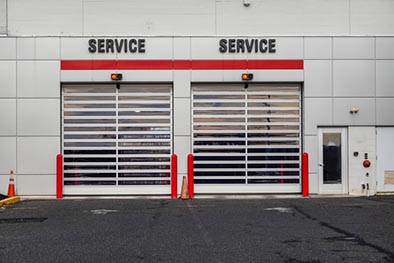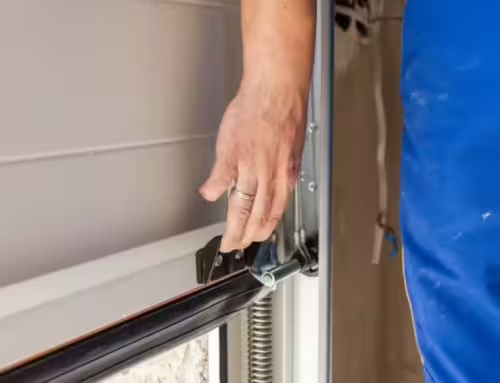Garage Door Openers: The Inner Workings
The inner workings of a garage door opener involve several key components that work together to automate the process of opening and closing a garage door. Here’s a more detailed explanation of the inner workings:
- Motor:
- The electric motor is the central component of the garage door opener. It is usually housed in the main unit or motor housing.
- The motor generates the power needed to drive the opening and closing of the garage door.
- Drive Mechanism:
- The motor is connected to a drive mechanism that translates its rotational motion into linear motion to move the garage door.
- Common drive mechanisms include belt drives, chain drives, and screw drives. These mechanisms are responsible for lifting or lowering the door along the tracks.
- Trolley or Carriage:
- The trolley or carriage is connected to the drive mechanism and moves along the track. It is attached to the garage door via an arm or a linkage system.
- As the motor operates, the trolley carries the garage door along the track, facilitating the door’s movement.
- Limit Switches:
- Limit switches are used to determine the fully opened and fully closed positions of the garage door.
- When the garage door reaches the preset limits, the limit switches signal the motor to stop, preventing overtravel. These switches are adjustable to ensure precise positioning.
- Remote Control and Receiver:
- The garage door opener comes with a remote control, usually equipped with buttons for opening, closing, and stopping the door.
- The remote control communicates wirelessly with a receiver in the garage door opener unit. The receiver interprets the signals from the remote control and activates the motor accordingly.
- Safety Sensors:
- Safety sensors are mounted near the bottom of the garage door on either side. They emit an infrared beam across the door opening.
- If an object or person interrupts the infrared beam while the door is closing, the sensors trigger the garage door opener to stop and reverse its direction, enhancing safety.
- Control Panel:
- Many garage door openers have a control panel mounted on the wall inside the garage. This panel provides a local means of operating the garage door and may include buttons for opening, closing, and stopping.
- Manual Release Mechanism:
- In case of a power outage or emergency, a manual release mechanism is often included. This mechanism allows the user to disengage the motor and operate the garage door manually.
- Power Supply:
- Garage door openers are typically powered by standard household electrical outlets. Some models may also have battery backup systems to ensure operation during power outages.
Understanding the inner workings of a garage door opener helps users troubleshoot issues, perform maintenance, and use the opener safely and effectively. Regular inspection, lubrication, and following manufacturer guidelines are important for the longevity and reliable performance of the garage door opener.






